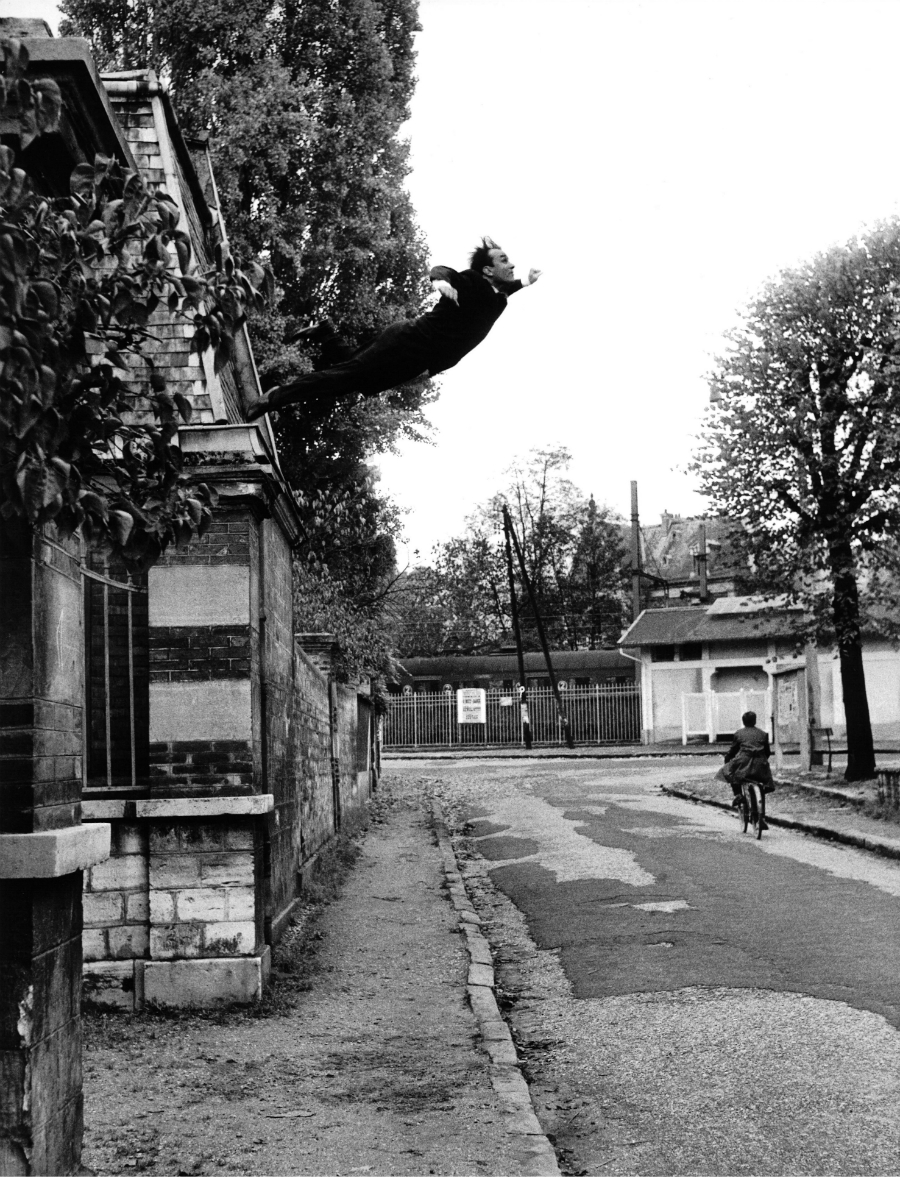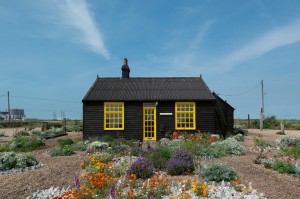“I wish that on this day joy and wonder will reign”: Happy Theatre Of The Void Day

Ahead of Tate Liverpool marking Yves Klein’s fictitious Theatre of the Void Day (this Sunday), Curator Darren Pih gives insight into the artist’s radical ideas and production – anticipating many of the movements that developed in the 1960s…
“My monochrome canvases are not my definitive works, but a preparation for my works; they are the remains of the creative process, the ashes.” (Yves Klein, 1957)
Over seven years of artistic production until his premature death at the age of 34 in 1962, Yves Klein created an expansive and influential body of work, leaving a deep imprint on the creative landscape. Klein is perhaps most known for his single-colour monochrome paintings, especially those rendered in his trademark deep ultramarine blue.
Yet his practice also embraced more diffuse and equally radical modes of artistic production, including performance actions, installation, music and architecture. Reacting against art movements of the post-war period that emphasised improvised expression and introspection, Klein aimed to regenerate our experience of art, shifting emphasis away from the artist as “object maker” towards the artist as orchestrator of grandiose public interventions, rituals and actions.
Klein sought to liberate the art object from all material and spatial constraints towards what he described as an “immaterial sensibility” expressed through pure colour. In the summer of 1946, on a beach in Nice with artist friends Arman and Claude Pascal, Klein proclaimed: “the blue sky is my first artwork”; appropriating infinite space as painting.
His artistic breakthrough came in 1956 with an exhibition at Galerie Colette Allendy, Paris, comprising variously sized single-colour monochrome paintings in red, yellow and other colours. At this time, with the aid of a chemist, Klein developed a synthetic binding material to retain the brilliancy and tactile presence of dry pigment, with ultramarine – which he named International Klein Blue (IKB) – becoming his signature colour. Klein also began to put distance between himself from the production of the artwork by making paintings using paint rollers and sponges, which evolved from a tool to become a medium in the form of IKB-saturated sponge sculpture.
His IKB pictures – portals into infinite blue space – connote immaterial values beyond what can be seen or touched. Rejecting the notion of representation in painting, Klein harnessed pure colour as a vehicle to liberate our faculties of perception. For him, IKB expressed absolute freedom; the “spirit and sensibility that the colour of the sky and the sea alone can produce.”
Klein’s approach to colour was influenced by the expanses of blue in Giotto’s frescoes at the Assisi, as well as by the theories of Eugène Delacroix, but he was also influenced by esoteric and spiritual writings, East Asian religion, as well as judo. Klein took up judo in 1947, later training at the prestigious Kodokan Judo Institute in Tokyo (1952–3) where he rose to 4th “dan” ranking. Klein came to regard the practice of judo in artistic terms, understanding its “katas” (or forms) as fundamental principles of balance and energy. “Judo”, he wrote, “helped me to understand pictorial space and the discovery of the human body in a spiritual space.” In this sense, his Leap into the Void of 1960 can be read as a judo bird kata, Klein self-staged in equilibrium with infinite space.
Klein’s shift towards self-performativity gave rise to public actions such as Anthropometry of the Blue Epoch, staged at Paris’s Galerie Internationale d’Art Contemporain in 1960. Here, the artist harnessed the expressive potential of the body, choreographing the production of his Anthropometry paintings before an invited audience using the spectacle of artistic direction. A tuxedoed Klein directs nude female models, sponging themselves in pigment to become “living paint brushes”, transferring a material imprint of life directly onto large sheets of white paper attached to the walls or on the floor. When making these works, Klein further distanced himself from the physical, wearing white gloves and choreographing events rather than getting his hands dirty.
Klein’s Anthropometries are perhaps best understood as a residual after-image of a performance, corresponding with his description of his artworks as being the “ashes” of his creative process. Klein transcended traditional parameters of art; although his career was short, his prodigious artistic activities anticipated many of the movements that developed in the 1960s, including pop art, performance and minimalism, enabling us to visualise new attitudes on the relationship between life and art, painting and action, and object and idea.
Darren Pih, Exhibitions & Displays Curator at Tate Liverpool
This essay is taken from Tate Liverpool’s new seasonal publication Compass. Available for £1, exclusively at Tate Liverpool, it features articles and essays exploring exhibitions on each floor of the gallery
On 27 November 1960, Yves Klein released a fake, one-day newspaper called Dimanche, “le journal d’un seul jour” (Sunday, one day newspaper) across newsstands in Paris. The made up broadsheet marked what Klein described as Theatre of the Void, his own public holiday. In the newspaper Klein announced “by presenting Sunday, November 27, 1960, from 0:00 to 24:00, I thus present a full day of festival, a true spectacle of the Void.” He went on to state, “I wish that on this day joy and wonder will reign, that no one will get stage fright, and that everyone, conscious as well as unconscious actors-spectators of this gigantesque presentation, should have a good day. This conception of theatre that I propose is not only the city, Paris, but also the countryside, the desert, the mountains, even the sky, and even the entire universe. Why not?”
Head down to Theatre of the Void Day on Sunday 27 November 2016 at Tate Liverpool — book online and enter the code INTOTHEVOID to activate a £5 ticket
See the Yves Klein exhibition at Tate Liverpool‘s fourth floor gallery space from 21 October 2016–5 March 2017 — £11/8.80/6. This exhibition runs co-currently with Edward Krasiński (ticket allows entry to both exhibitions) and Cécile B. Evans (ground floor, FREE)
Image: Harry Shunk, 1924-2006 and János Kender, 1938 – 2009 Yves Klein’s “Leap Into the Void,” Fontenay-aux Roses, France, 1960 October 23 1960 (Yves Klein’s “Saut dans le Vide,” Fontenay-aux Roses, France, 1960 October 23) 1960 Harry Shunk and Shunk-Kender photographs





